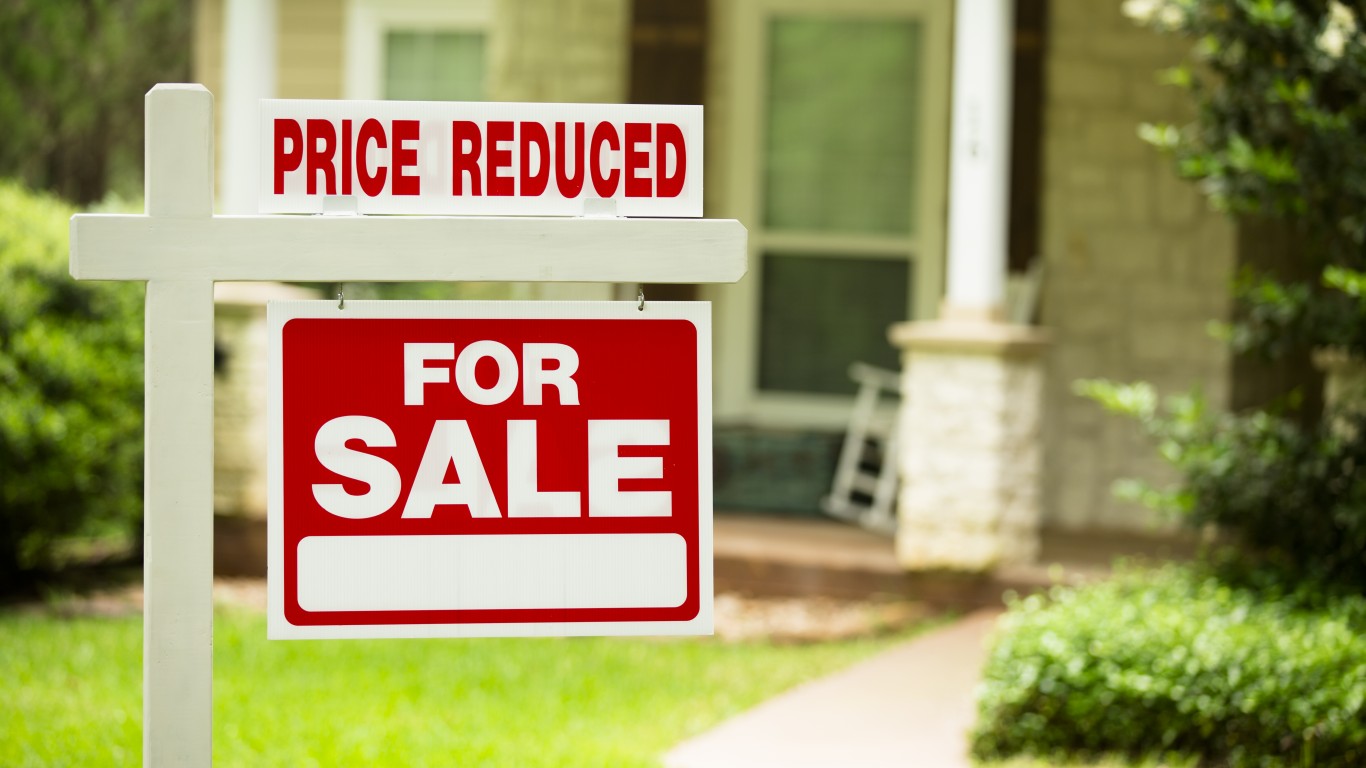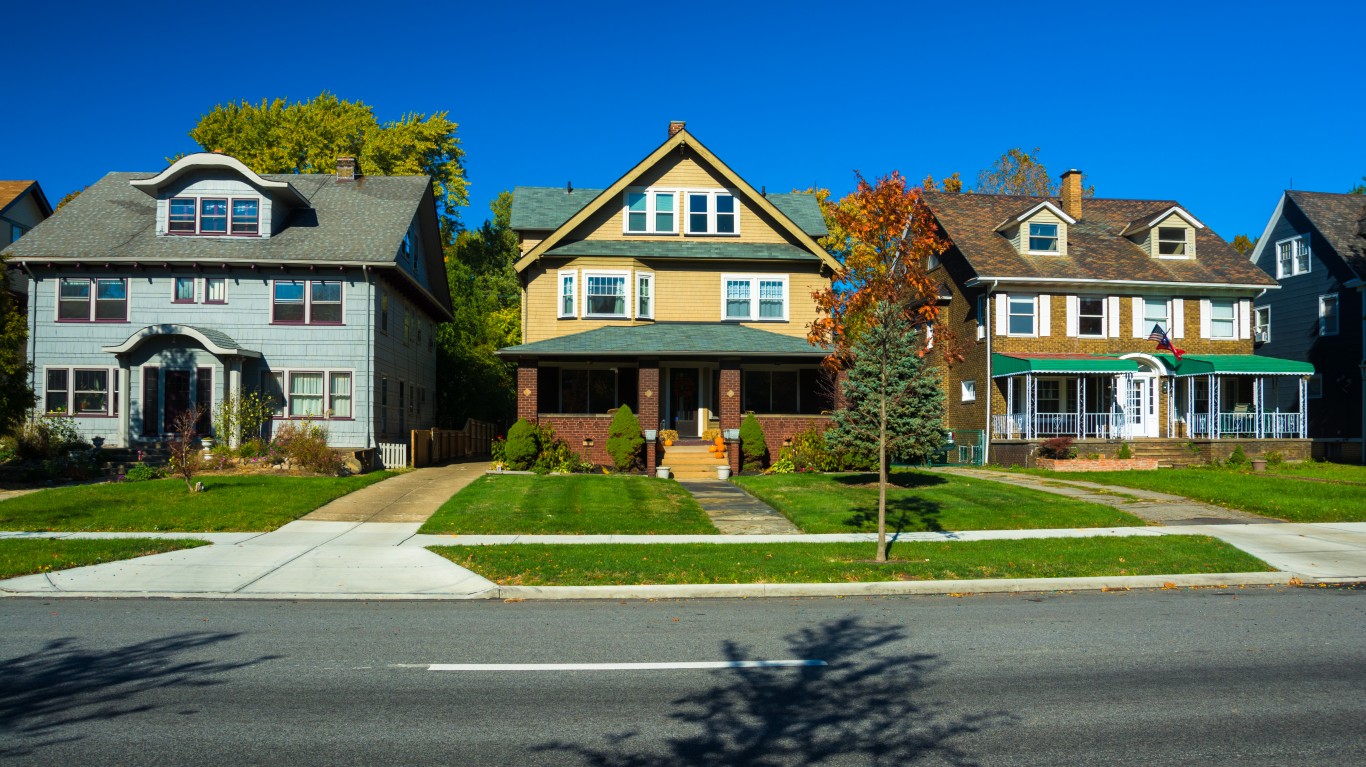After a long and painful downturn in the housing market, home prices are finally beginning to head north. According to Zillow, a real estate listing website, home values rose 5.1% across the United States between February 2012 and February 2013.
Many local housing markets are performing considerably better than the country as a whole. Home values rose more than 13% in 10 of the 30 largest housing markets for which Zillow has data, and rose more than 20% in five of them. The biggest growth of all took place in Phoenix, where home values rose 24%.
Click here to see the 10 hottest housing markets
Six of the 10 housing markets on the list are in California, which was hit harder by the housing downturn than most states. Three of the four metropolitan areas not in California — Detroit, Las Vegas and Phoenix — were also disproportionately hurt by the housing crisis. For example, in Las Vegas, home prices dropped 59% between the peak in the first quarter of 2006 and the third quarter of 2012.
Home values do not necessarily rebound quickly after a major downturn, said Svenja Gudell, a senior economist with Zillow. However, many of the areas with the most growth in the past year, notably those around Silicon Valley, have remained desirable places to live. This has helped these areas recover at a faster clip compared to the rest of the country. Residents have taken advantage of the record-low mortgage rates and relatively low prices, despite the fact that average home values in places like San Jose and San Francisco are higher than most of the country.
Buyers in many of these areas are investors looking to rent out the homes, leading to low inventory and higher prices. “Listings are very tight because you have a whole lot of demand,” Gudell said. “This has led to bidding wars on homes, which have in turn led to much higher home valuations in certain areas.” Even in places such as Detroit, where an emergency city manager was just appointed to address the city’s debt crisis, many of the homes that are on the market are being snapped up by investors, she said.
Along with the growth of the housing market, unemployment has gone down in these areas. In many cases, the local unemployment rate dropped by nearly two percentage points between February 2012 and February 2013, compared to the national rate, which fell less than 1%. Notably, construction employment has risen considerably in the past year in many of the metro areas on the list. For example, construction headcount rose more than 12% in San Jose during the past year.
Based on a review of the median home value of the 30 largest housing markets measured by Zillow, 24/7 Wall St. identified the 10 housing markets that have risen the most from the first quarter of 2012 to the first quarter of 2013. Zillow also provided data regarding expected growth from the first quarter of 2013 to the first quarter of 2014, the number of homes sold in February, as well as the change in the number of homes sold from a year earlier. Unemployment rates as of February 2013 were taken from the Bureau of Labor Statistics. Data on when home prices peaked and the percentage decline since that time was based on median home value from Fiserv.
These are the hottest housing markets of 2013.
10. Denver, Colo.
> Change in home value: 13.1%
> Current home value: $234,200
> Bottom in home value: Q2 2011
> Forecast change in home value: 3.1%
The city experienced robust growth in 2012, and this is likely to continue, according to Zillow. However, between 2013 and 2014, home values are expected to rise only an additional 3.1%, by far the smallest growth of any housing market on this list. The Denver market did not fall as hard as other areas during the housing collapse. Between the peak in the first quarter of 2006 and the third quarter of 2012, Denver home prices only fell 5.4%. This February, more than 5,000 homes sold — an increase of 27% from the same month last year.
Also Read: America’s Most Polluted Cities
9. Detroit, Mich.
> Change in home value: 13.1%
> Current home value: $84,700
> Bottom in home value: Q3 2011
> Forecast change in home value: 4.4%
In recent years, Detroit has been hit by a steep decline in home prices, as well as continued contraction in the automobile industry. As of the first quarter of 2013, the average home value in the Detroit area was just $84,700, by far the lowest of all the large metro areas in the country measured by Zillow. Investor purchases helped push home values higher, although not as much as they did in many cities in California, Gudell said. Detroit continues to suffer from high unemployment. The area’s unemployment rate was 11.3% in February, down just slightly from 11.5% a year ago.
8. Los Angeles, Calif.
> Change in home value: 14.9%
> Current home value: $439,400
> Bottom in home value: Q1 2012
> Forecast change in home value: 11.1%
In addition to the nearly 15% growth already experienced in the past year, home values are expected to rise an additional 11% next year. The growth in the housing market in California has led to growth in employment as well. The unemployment rate in the Los Angeles metropolitan area was 10.3%, a significant improvement from the 11.6% rate a year ago. Between February 2012 and February 2013, the number of people employed in construction rose 7.1%, an indicator of an improving housing market.
7. Riverside, Calif.
> Change in home value: 16.3%
> Current home value: $210,100
> Bottom in home value: Q1 2012
> Forecast change in home value: 17.2%
Like many parts of California, the Riverside metropolitan area is recovering from the housing bubble burst. Home values are expected to jump 17.2% in the coming year, more than any other large city in the United States that Zillow considered. Like all other metro areas on this list, the unemployment rate in the Riverside area has fallen also, although it remains comparatively high.The 10.8% unemployment rate in February was 1.8 percentage points lower than it was in the same month of 2012.
6. San Diego, Calif.
> Change in home value: 17.1%
> Current home value: $396,800
> Bottom in home value: Q1 2012
> Forecast change in home value: 8.8%
Between the market peak in the first quarter of 2006 and the third quarter of 2012, home prices fell 37%. But now home values have rebounded, increasing 17.1% from the first quarter of 2012 to the first quarter of 2013. This included a 5.5% increase in the past quarter alone. There were 3,769 home sales in February in the San Diego housing area, an increase of nearly 5% from the same month in 2012. The unemployment rate in San Diego was 8% in February, a significant improvement over the 9.4% back in 2012.
5. Sacramento, Calif.
> Change in home value: 20.1%
> Current home value: $241,600
> Bottom in home value: Q1 2012
> Forecast change in home value: 15.6%
Home prices in Sacramento peaked in the fourth quarter of 2005, earlier than most metropolitan areas. Between the peak and the third quarter of 2012, home prices fell a painful 51.5%, which was among the largest drops in the entire country. Between the first quarter of 2013 and the same quarter in 2014, home values are expected to rise an additional 15.6%, more than any of the other largest 30 housing markets except for Riverside. The metro area’s unemployment rate of 9.6% as of February was still considerably higher than the national rate of 7.7%.
Also Read: America’s Fattest Cities
4. San Francisco, Calif.
> Change in home value: 21.4%
> Current home value: $563,200
> Bottom in home value: Q1 2012
> Forecast change in home value: 10.5%
San Francisco’s home values rose by 21% last year, with 6.4% growth between the fourth quarter of 2012 and the first quarter of 2013. This was among the largest quarterly increases of all large metro areas in the country. The median home value in San Francisco was $563,200 as of the first quarter of 2013. And the growth in home values is expected to continue — by an additional 10.5% in the next year. The unemployment rate in the San Francisco metropolitan area was 6% in February, a significant drop from the 7.5% in the same month last year.
3. San Jose, Calif.
> Change in home value: 22.1%
> Current home value: $676,100
> Bottom in home value: Q3 2009
> Forecast change in home value: 9.7%
The housing market in the San Jose metropolitan area bottomed out in the second quarter of 2009, significantly earlier than the other metro areas on this list. Since then, home prices have increased a great deal. As of the first quarter of this year, San Jose’s median home value of $676,100 was more than any of the other largest metro areas in the country. The unemployment rate in the San Jose area has declined from 9.2% in February 2012 to just 7.6% in the first month of 2013. Construction jobs in the San Jose area grew by 12.3% from February 2012 to February 2013, likely a positive sign for the local housing market.
2. Las Vegas, Nev.
> Change in home value: 22.3%
> Current home value: $138,800
> Bottom in home value: Q1 2012
> Forecast change in home value: 7.5%
Las Vegas’s housing market has made a rapid comeback, with home values rising more than 7% in the most recent quarter alone. While values are on the rise again, it may take some time for the area to return to prerecession levels. Between the peak in the first quarter of 2006 and the third quarter of 2012, home prices plunged a whopping 59%, more than all but five other metro areas out of the 339 measured by Fiserv. As the housing market has started to rebound, jobs have come back as well. Las Vegas’s unemployment rate of 9.8% as of February — while still considerably higher than the national rate — was a significant improvement from the 12.1% unemployed in the same month of 2012 and the high of 14.6% back in July 2010.
Also Read: The Most Popular Home Improvements
1. Phoenix, Ariz.
> Change in home value: 24.0%
> Current home value: $165,600
> Bottom in home value: Q3 2011
> Forecast change in home value: 10.6%
No other metropolitan area’s housing market has grown faster than Phoenix, where home values rose 24% over the past year. The growth is expected to continue as well. Between 2013 and 2014, home values are projected to rise an additional 10.6%. The unemployment rate in the Phoenix metro area was just 6.7% in February 2013, down a percentage point from the same month in 2012. Notably, construction jobs were up 8.2% from the previous year, likely an indicator of a more robust housing market.
Are You Ahead, or Behind on Retirement? (sponsor)
If you’re one of the over 4 Million Americans set to retire this year, you may want to pay attention.
Finding a financial advisor who puts your interest first can be the difference between a rich retirement and barely getting by, and today it’s easier than ever. SmartAsset’s free tool matches you with up to three fiduciary financial advisors that serve your area in minutes. Each advisor has been carefully vetted, and must act in your best interests. Start your search now.
Don’t waste another minute; get started right here and help your retirement dreams become a retirement reality.
Thank you for reading! Have some feedback for us?
Contact the 24/7 Wall St. editorial team.




